RAZORS
A symbol of gentlemanliness, razors have shaped the history and faces of many men throughout eternity. This fascinating tool is a symbol of sharpness. So come with us to explore in a little more depth what is so fascinating about razors and how they have changed throughout their long and rich history.
HISTORY
Men felt the need to trim their bearded crown of beauty as early as 100,000 B.C. Back then, they removed their razor blades using shells, specifically their sharp edges. The change came about 30,000 years BC, when the remains of the first razors for shaving were discovered. They were made from a flint blade that was quite sharp. The disadvantage was the short duration of the "sharpness" as flint is known for its rapid dulling. The next major breakthrough came 5,000 years ago when the first copper razors began to be constructed around India and Egypt.
Egyptian razor from ancient times
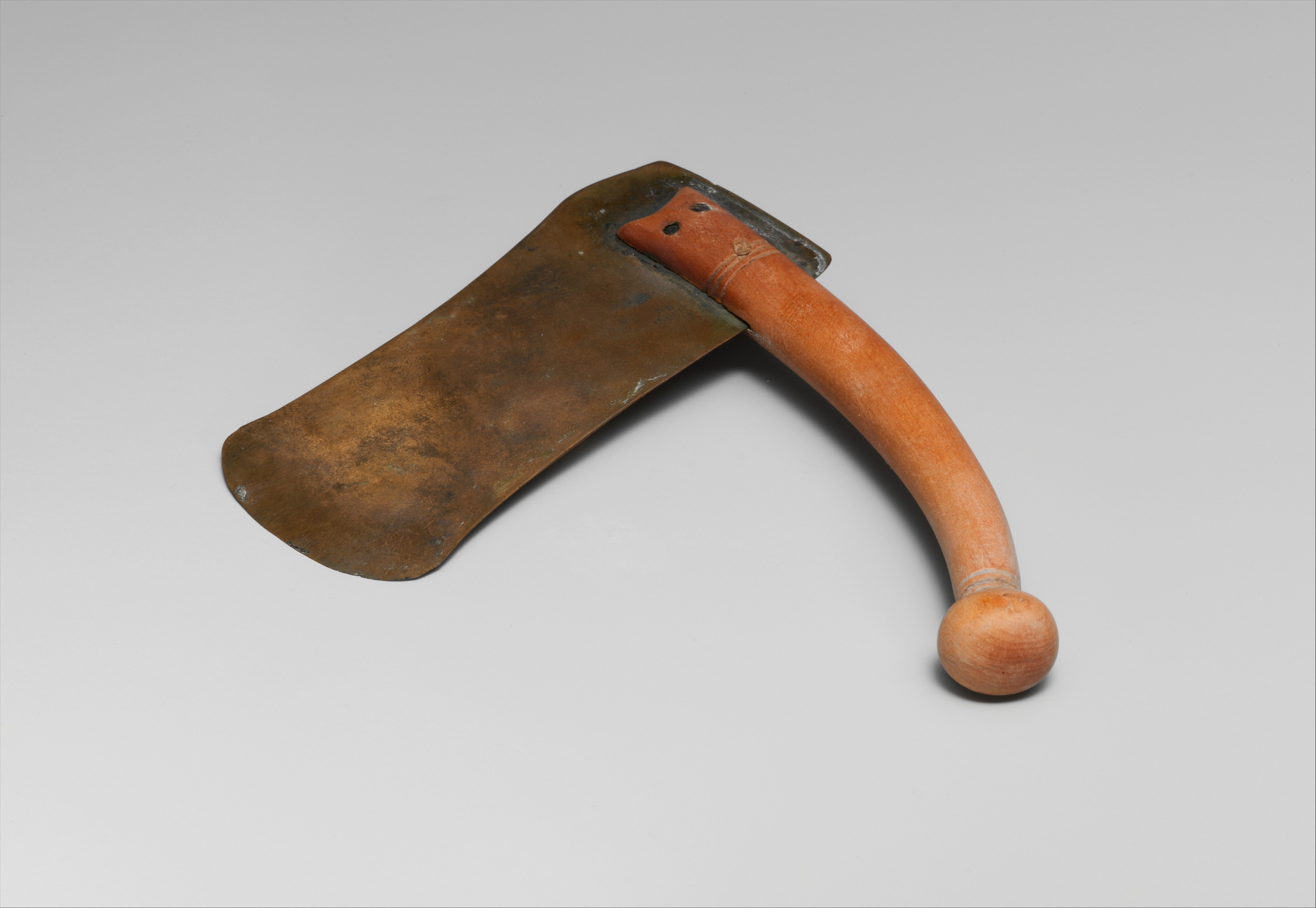
A major upheaval occurred in the 18th and 19th centuries in England, specifically in the city of Sheffield, which is still regarded as the cutlery heart of England. The tool codenamed "cutthroat" was a richly decorated razor that had a concave steel blade. As it was very sharp, careful handling was a necessity. More than one customer left the barber with various minor injuries.
Later, the folding razor, which was the brainchild of William Henson, came to prominence. Although at first people "grumbled" about the inferior material, the development of the steel industry caused a great boom. They spread all over the world as faithful tools for gentlemen to groom their faces, and there was no doubt that every gentleman had to own at least one such specimen.
Folding razor´ William Henson´
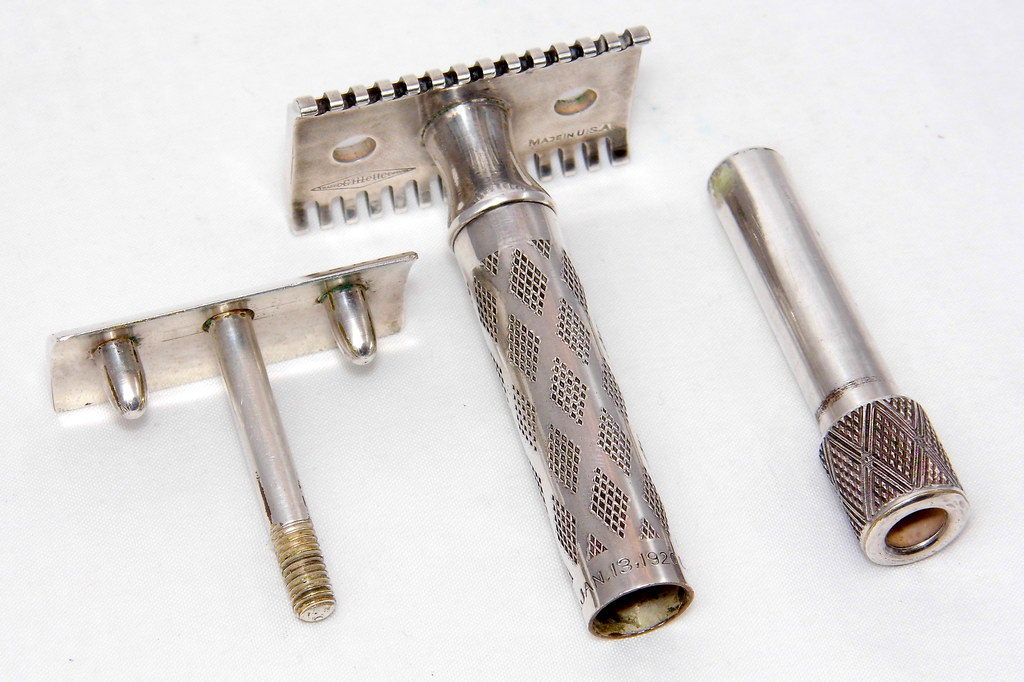
INTERESTING FACTS FROM EGYPTIAN HISTORY
In the past, both long beards and shaving had different meanings, reflecting a given culture or belief. In Egypt, though, they first grew their beards and hair in braids that could be the envy of many a Slovakian maiden, and sprinkled them with gold dust as a sign of wealth. However, this trend did not last long. Long beards and hair became associated with aggressive animal instincts, resulting in their gradual shortening as a sign of civility. Not only hair and beard were removed, but also eyelashes or eyebrows. Shaving gradually became a daily male routine that was so important to them that they procured their own unique shaving tools. Wealthy Egyptians, however, did not waste time shaving themselves. They each had their own barber, and in some cases even moved them into their homes so that they would always have them on hand.
DESCRIPTION, PARAMETERS AND TYPES OF RAZORS
Since they shave with a blade, let's start with that. A razor blade differs in its material, height or decoration.
We can use classic carbon steel as a material, modern razors also use stainless steel. The primary difference is in corrosion resistance and ease of sharpening.
Carbon blades require more care, but they are easy to grind and since they have a very fine grain, achieving extreme sharpness is not a problem.
Stainless is much easier to maintain, but grinding tends to be a little more difficult although by using a good quality abrasive and lapping pastes we can also produce a great edge.
Blade height - this is the basic difference between razor blades. It is measured between the edge and the back of the blade and its size is given in Anglo-Saxon inches (inch) divided to a fraction of 1/8. One inch is equal to 25,4 mm
This means that a razor with a 5/8 blade is equal to 15.875 mm.
Example: (25.4 x 5) / 8 = 15.875 mm
You can find the dimension resolution with a fraction of 1/16, where 6/8 = 12/16.
If you haven't shaved with a razor before we recommend sizes 4/8 or 5/8.
Blade decoration - the razor blade may have different decoration or writing on it from the manufacturer. Blades can be decorated with engraving, engraving, gilding, stamping or dyeing.
The choice of blade decoration depends on your taste, the decoration does not affect the shaving effect.
Blade cutting - is divided according to the blade making into one-sided and two-sided cutting.
One-sided cutting (it is from both sides), but first one side of the blade has been ground and then the other. In double-sided cutting, the razor blade is ground from both sides at the same time.
We know straight and folded razor blades. The razor blades that are most commonly used are as follows:

The handle or holder helps you to better grip the razor while shaving. The French razor type does not include a holder and the razor can only be held by the neck.
The blade guard is the part of the razor into which the blade closes to protect it from damage. The blade is joined with rivets, glued or made in one piece.
GRINDING AND TESTING OF THE BLADE
The razor is ground on a grinding stone with a grit of at least 8000, ideally 12000. It is recommended to use synthetic stones because of their homogeneity and the low likelihood of flaws that would compromise the blade during the grinding process. The razor blade is ground on the stone by laying it flat on a flattened grinding stone (see comparison stones) and gently dragging the blade across the stone. When you reach the end, flip the razor over the spine (the blunt part along the "top" edge of the blade) and repeat the process for the other side of the blade. We must maintain a constant, moderate pressure along the entire length of the blade to avoid a gradual asymmetrical sharpening, which would affect the quality of the shave. The blade is then wrapped around the wrapping belt before each shave, which pulls the blade out and smooths out any unevenness that could lead to cuts during shaving. Dressing on the belt is done (as opposed to grinding on the stone) spine first to avoid damaging the belt and the sharpened blade. After tightening on the end of the belt, the razor is again flipped over the spine to the other side, and the process is repeated. The best quality belt is Russian jucht, which is horsehide from Siberia. The razor blade is checked as follows:
We open the razor and grasp it in our dominant hand with the blade facing up.
Between the thumb and forefinger of the other hand, take a hair so that most of the hair is hidden and protrudes freely about half an inch in length.
Lightly place the hair from above against the blade. We must be careful not to touch the blade with our fingers, as it is fragile and damaging it means completely resharpening the razor to create a new blade.
Press the hair lightly against the blade. As long as the razor makes a clean cut and a piece of hair bounces off, the razor is properly sharpened.
Raise the hair until you can see about half a centimetre and repeat the process for the entire length of the blade.
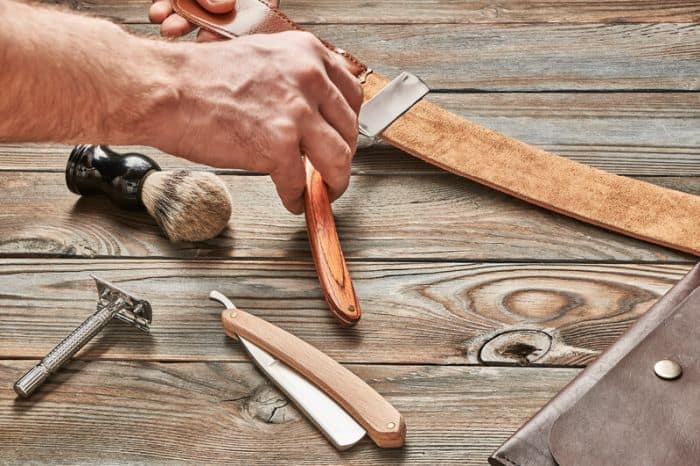
Particularly in professional barbershops, the face is steamed with a hot, damp cloth before soaping to soften the beard and allow it to rise from the skin. This achieves maximum skin smoothness - a perfect shave and minimises irritation to the skin on the face.
Compared to a conventional knife, the razor is particularly characterised by a sharper blade angle and also by the fact that it is not fitted with a tip, so that no one can be injured by a prick or prick during shaving. The blade of the razor must be made of high quality, hard-hardened steel (even at the cost of increased brittleness) so that the razor can be sharpened and hold its edge well. The razor cannot be used for other purposes because of the very fragile blade, which is easily chipped. Razors are almost always (with the exception of Japanese razors) made as folding or snapping razors, again to prevent damage to the blade and to protect the user from cuts when the razor is not in use.
RAZOR SHAVING TECHNIQUE
The razor is the direct ancestor of the razor blade. The actual beard shaving technique here is very similar to the razor shaving technique. When shaving the beard, the face of the shaved man is covered with a thick foam of shaving soap and cream in order to suitably modify the physical properties of the beard (softening and moisturising). The barber gently slides the razor at an angle of approximately 20 to 30 degrees over the taut skin and cuts off the beard with its sharp edge, which is continuously rinsed from the razor together with the foam. This work requires practice and skill to avoid injury to the shaved man's skin. Barber apprentices learned to shave with a razor by wiping the soapy lather from the surface of inflated balloons with the blade of the razor, which required the necessary feeling in the hand. In the case of a minor cut, alum is applied to the wound, whose powerful astringent effects stop bleeding.
History: At a time when physical work was prevalent, workers in some professions had such tired and thickened hands (e.g. stonemasons, blacksmiths) that they could not even shave themselves with a razor. Therefore, either their wife shaved them or they had to go to a barber. This also applied to old men who suffered from hand tremors.
A FEW EXAMPLES FROM OUR OFFER
Böker 14er Carbon

Böker Celebrated Curly Birch
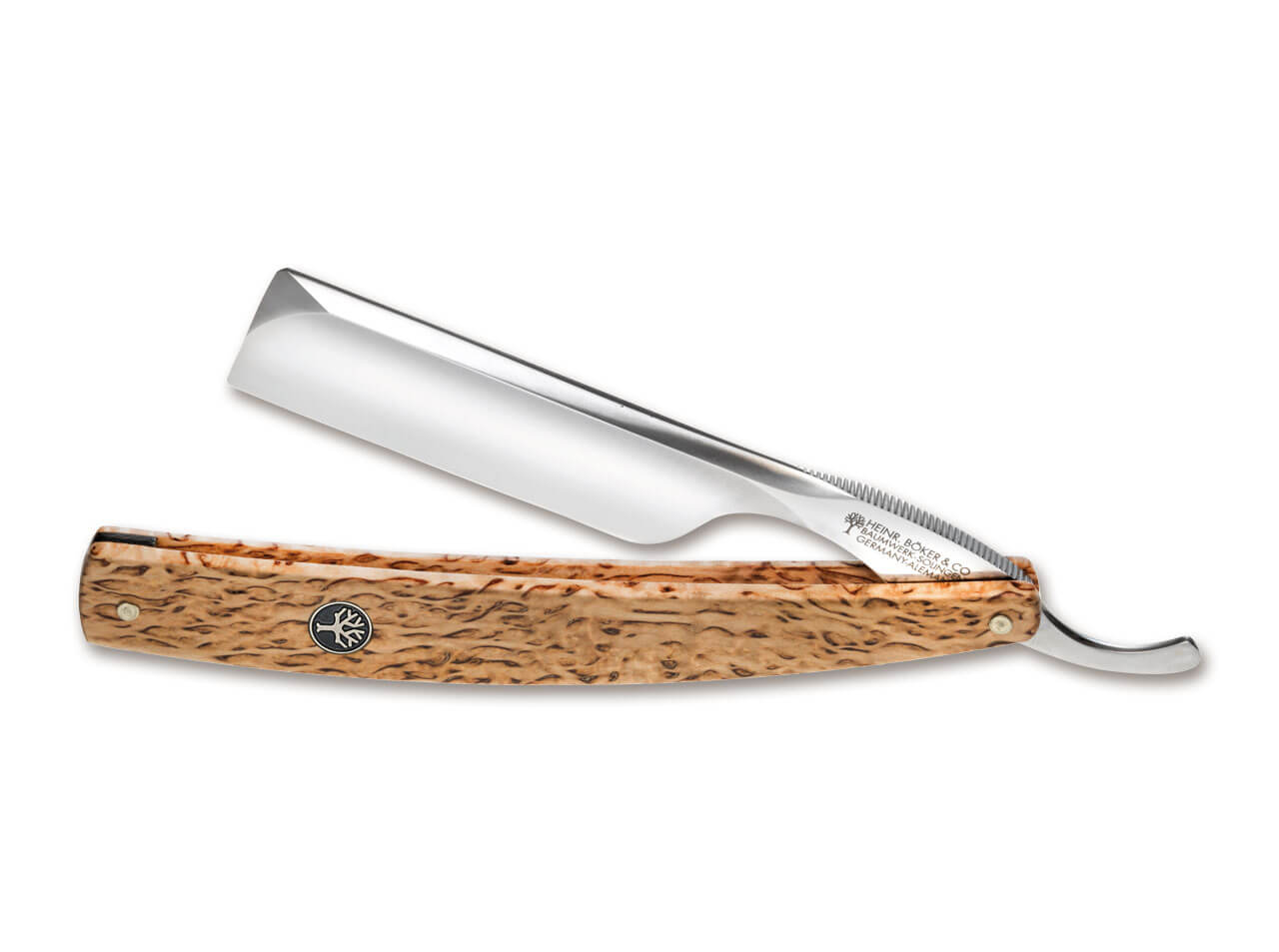
Böker Butterfly Gunmetal
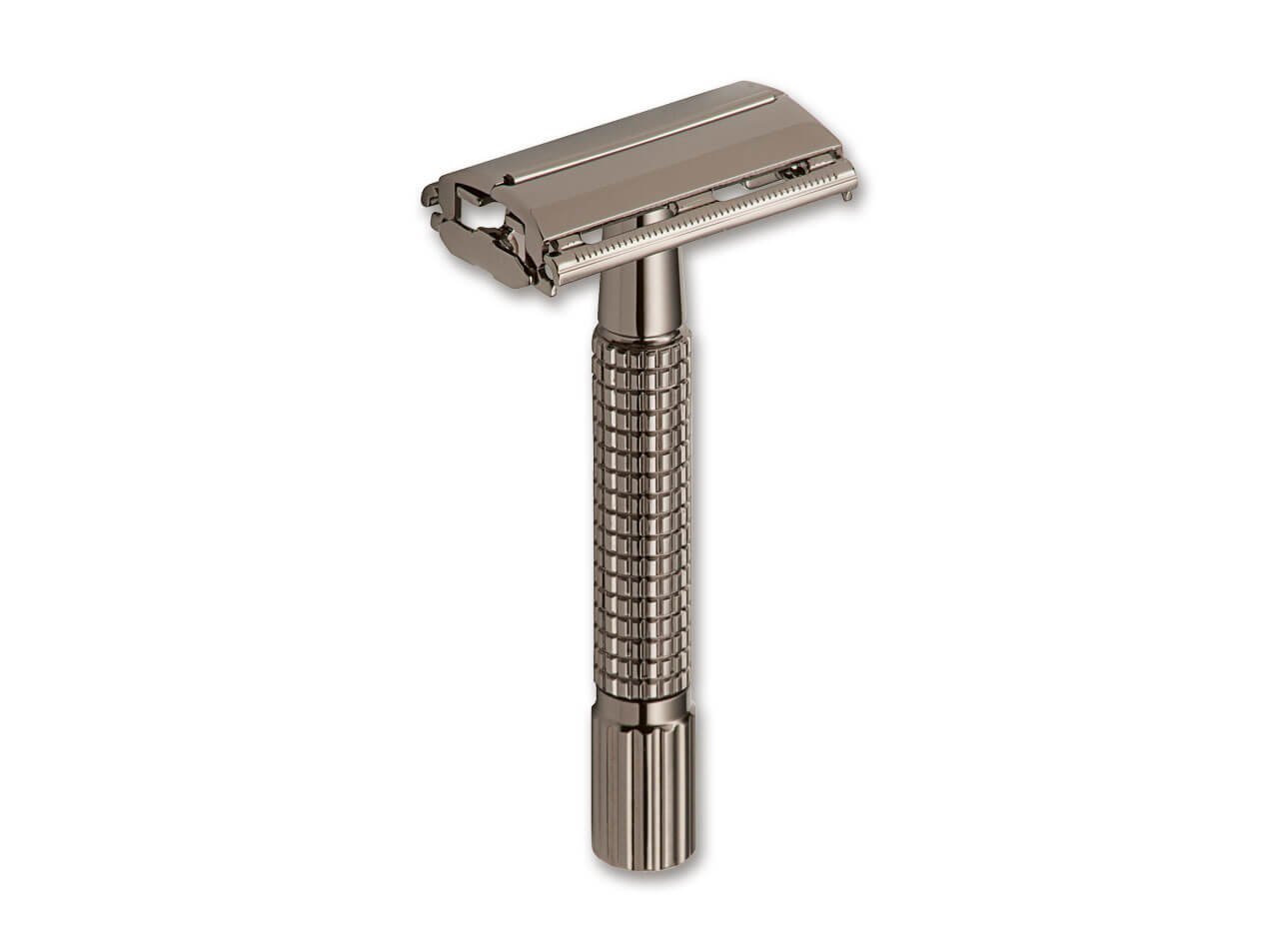
Böker Damascus Horn
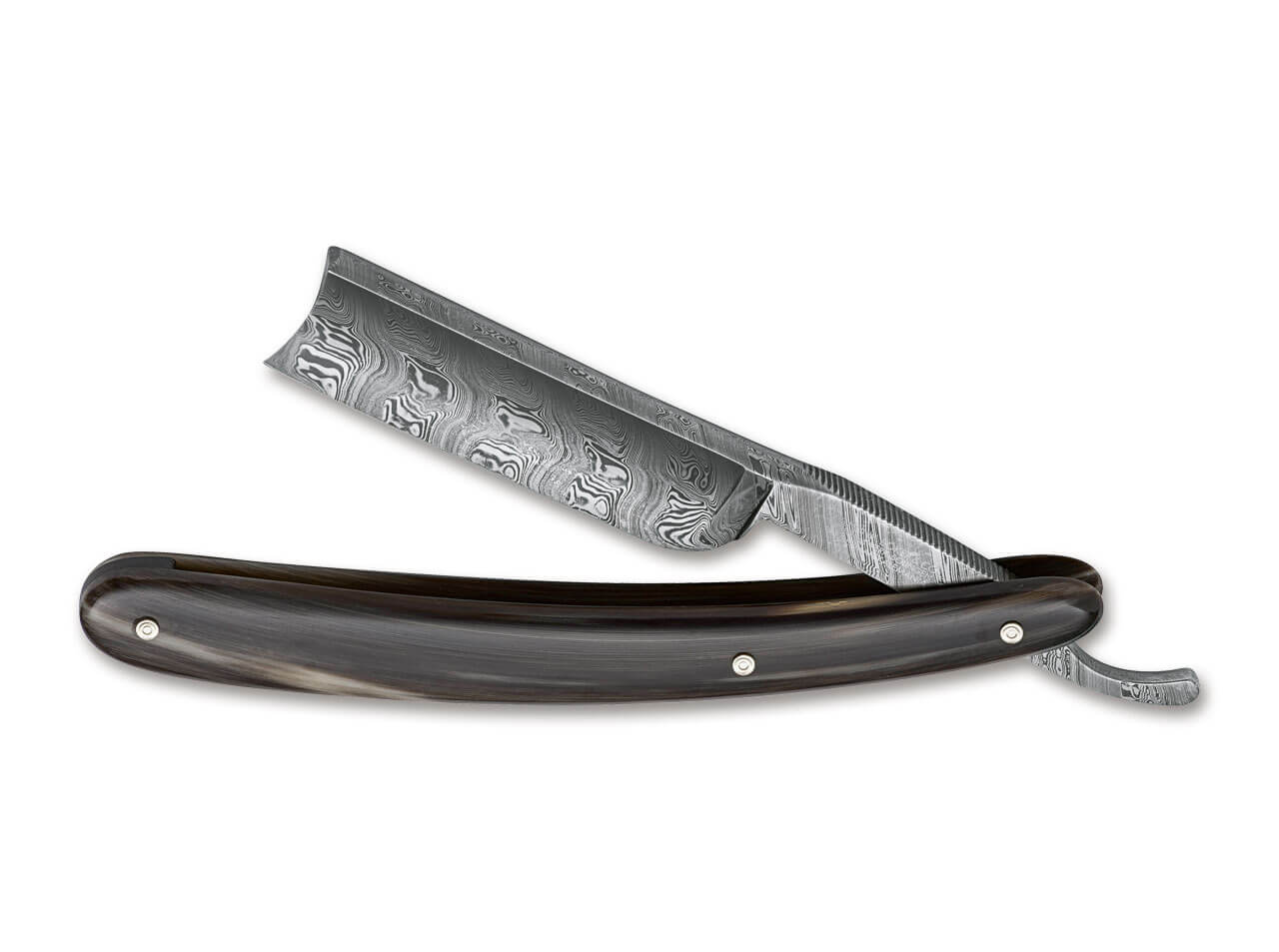
Böker Barbarette Black and Red
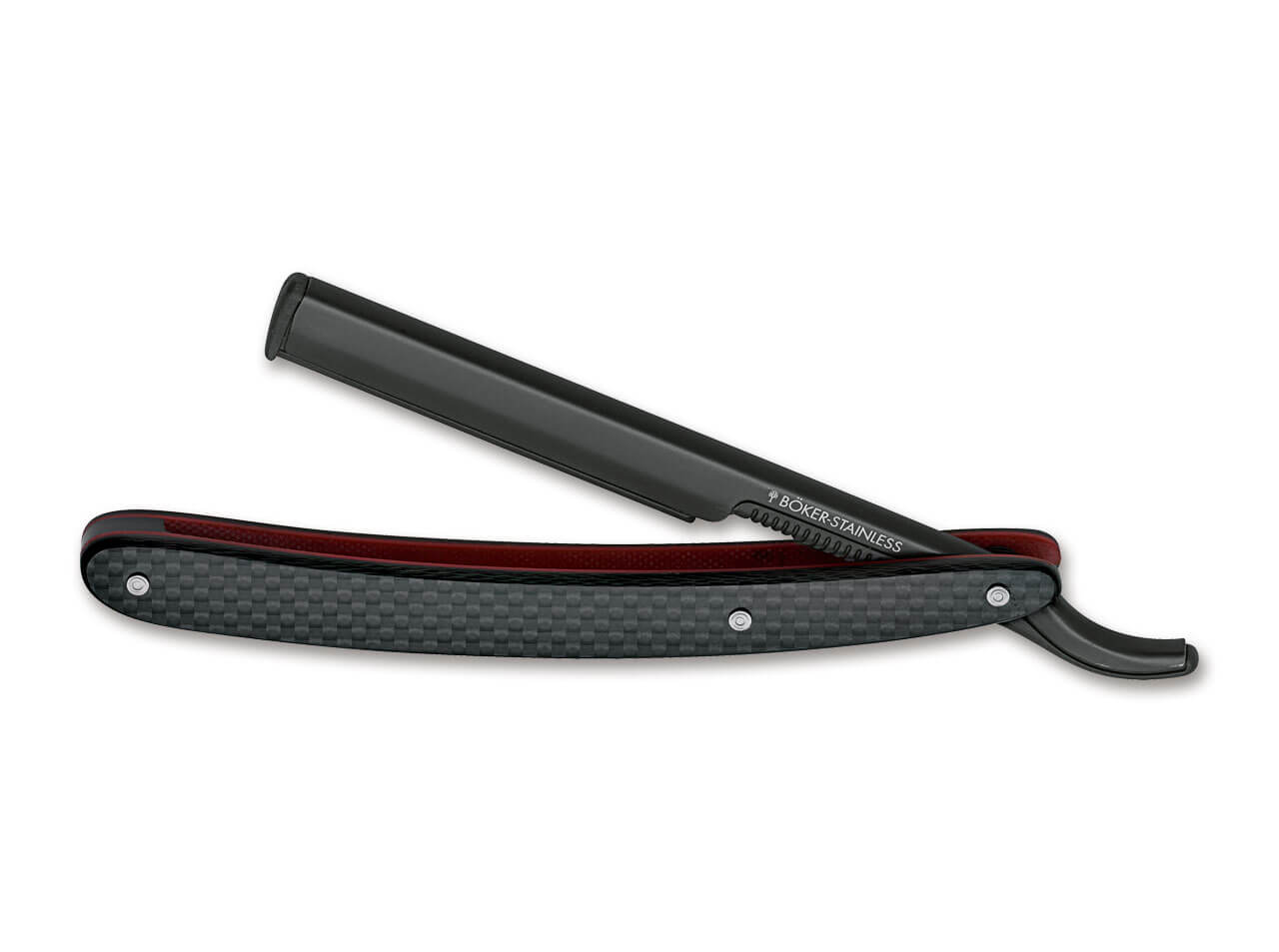
The razor is a unique instrument that has shaped the history and stubble of men throughout time. In our modern age, the razor is a romantic throwback to the past, even though it is truly indispensable for some tasks. For all the fine and sharp details as well as a completely smooth shave you will hardly find a more suitable tool.
























































































































































 Slovakia
Slovakia  Czech Republic
Czech Republic  Austria
Austria  Germany
Germany  Hungary
Hungary  Romania
Romania  Poland
Poland